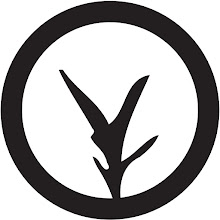Lately I've been getting the question, "Is there such a thing as lye free soap?" The answer? Nope. All soap is made with the chemical reaction between a base and alkali. Now, you might say, "I don't want to wash with anything that has lye in it!" Well, me either. That's why I don't. That's why I would never expect my customers to.
When the soap is cured, the base and alkali turns into a salt leaving no trace of lye (or sodium hydroxide) in the final bar. When someone says "Here is a recipe for lye-free soap..." the recipe calls for already made soap (such as glycerine soap) which has been made using lye.
Confused? Here is a fun, informative illustration about how REAL soap is made:
THE CAST OF CHARACTERS:

Let's say you have a great big grassy field. On one side of the field
are lurking a bunch of hungry wolves. The middle of the field is filled
with soft, fluffy bunnies, and of course, the hungry wolves want to eat them.

So the wolves run into the field and start eating bunnies.

But an interesting thing happens. Every time a wolf eats five bunnies -
*Pop!* - he changes into an energetic busy Border Collie and some
peaceful, soothing sheep! So, if there had been 500 bunnies in the field to
begin with, and 100 hungry wolves, all the wolves would eat all the
bunnies and you'd be left with a field full of busy Border Collies and
soothing sheep but no more bunnies or wolves!

This is what happens when you pour the lye solution into the oils - the
lye "consumes" the oils and the resulting transformation produces
saponified oils (soap) and glycerine. This is the process called
"Saponification".
And what if there had been only 450 bunnies in the field to begin with?
Well, then the 100 hungry wolves would have eaten all the bunnies and most
of them would be transformed into useful Border Collies and soothing Sheep.
But there would still also be 10 hungry wolves left over with no bunnies
left to eat, and you'd probably get bitten. Not good!

This is why it is so important to make sure you have always calculated
and measured your recipe carefully. You don't want to end up with any
"leftover lye" when you're finished!
On the other hand, maybe you really like having a few soft, fluffy
bunnies around. So you make sure that there are five hundred
AND FIVE bunnies in the field before you let the 100 hungry wolves
in. NOW after all the wolves have eaten their share of bunnies
and been transformed into useful Border Collies and soothing Sheep
you will still have five soft, fluffy bunnies left over and NO hungry wolves.

This is "Superfatting". Superfatting is when you deliberately add more oil to
your recipe than the lye can consume. In addition to saponified oils and
glycerine, a superfatted soap will also contain some oils which have been
left unchanged by the saponification process and still have their original
properties.
So having leftover bunnies is a good thing, right? And if 5 leftover
bunnies is a good thing, then 10 leftover bunnies would be even better,
right? Or 15 leftover bunnies? Or more? The more leftover bunnies
the better, right?

Well, maybe, and maybe not. If you have too MANY leftover bunnies,
they'll get in the way of the Border Collies who are trying to do their
job and distract them. Or the bunnies might eat all the grass in the
field and then the field is no good for sheep or anything else. So while
having leftover bunnies is certainly better than having leftover wolves,
you still need to know just how many leftover bunnies you can have
before you start getting too much of a good thing!

Remember this when you decide to superfat a soap recipe. A
superfatted recipe can give you a nice mild soap with the added bonus
of insurance against having any leftover lye. But if you have too much
"leftover oil", then your soap won't be a very useful soap any more!

What it all comes down to is you gotta know your bunnies!
http://www.canis-art.com/soaping.htm
Text and Images ©2008 Canis Art - All Rights Reserved





No comments:
Post a Comment